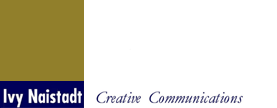In a recent summer coaching session, I was helping a senior level person prepare for a series of company road show presentations. Our initial intention was to enhance his overall delivery style. However, as he stumbled through the presentation, he realized that the overall communication strategy and scripting wasn’t clear.
I shared a common refrain with him which harkens back to my theatrical background; “If it ain’t on the page it ain’t on the stage." The theatrical adage refers to script writing in theater and film. It means that whatever is on the stage is driven by a good script. You can have a brilliant cast of talented actors but if it isn’t in the writing, it still doesn’t make an impact with the audience.
The same is true for a presentation. You must have a well thought out strategy for developing your content in order to prevail.
There are different degrees of scripting and approaches for different types of presentations based on your preferences. For example, some speakers like to write everything out and memorize the content. A TED Talk or Keynote are examples of types of presentations where that’s advisable. And you still might choose to leave breathing room for spontaneous remarks.
On the other hand, if you’re giving a presentation within your company, it’s not necessary to write out a talk word for word and memorize it. One of my clients uses an outline. Another simple notes with trigger words. However, you do want to know your opening (cold), know your close as well as your transitions.
Whatever method you choose, you want to have a thoughtful, logical approach to crafting your message; one that allows you to come across naturally and maintain your audience connection. The biggest mistake you can make is to wing it. While you may hit the mark here and there, more often you’ll miss it. A little scripting goes a long way.
I pointed out to my client that once he resolved the messaging issues, we could move to strengthening his delivery style. We tackled both and he was quite pleased with how much easier his communications flowed.
Whether you’re preparing for investor events, speaking at a conference or any important presentation for that matter, strive for crafting clear concise messages. You’ll not only help your audience understand and retain your ideas, you’ll find it easier for audiences to engage with you.
Copyright © 2015 by Ivy Naistadt - All rights reserved

